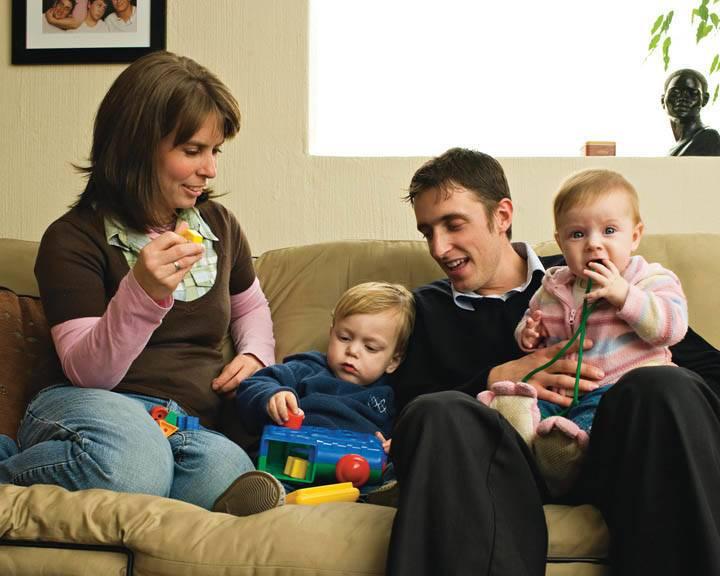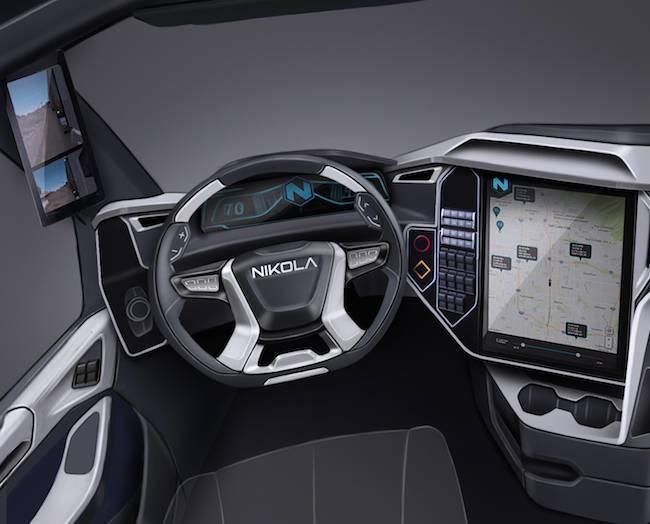Richmond Sues Its Hometown Oil Refinery for Global Warming Impacts


Richmond, Calif., which has long been home to one of Chevron Oil's biggest oil refineries, is joining the fight against Big Oil. On Jan. 22 the city announced it was suing 29 oil and gas companies, including Chevron, for climate impacts it is expected to sustain in coming years.
The suit is the 10th of its kind to be levied against fossil fuel companies, including the indigenous community of Kivalina, Alaska which launched the first litigation in 2008.
Earlier this year, New York City announced it was suing the world's five biggest oil and gas companies in order to "shift the costs of protecting the City from climate change impacts" on to those it feels is most responsible for "this existential threat."
The substance of Richmond's complaint is similar to many of its predecessors' claims. It alleges that the oil, gas and coal companies had foreknowledge that their products were causing global warming and took insufficient action to stop or avoid the injuries, which included the sea level rise that is now attributed to global warming.
The "[defendants], and each of them, by their affirmative acts and omissions, have created, contributed to, and assisted in creating, conditions in the City of Richmond, and permitted those conditions to persist, which constitute a nuisance by, inter alia, increasing local sea level, and associated flooding, inundation, erosion, and other impacts within the City," say the litigants.
Richmond is surrounded by water on three sides, which raises its vulnerability to sea level rise, the plaintiffs say.
“With 32 miles of shoreline, more than any other city on San Francisco Bay, Richmond is at extreme risk from sea level rise. We have two rail lines, 3,000 acres of public waterfront parks, vulnerable neighborhoods, two wastewater treatment plants, and a refinery, all subject to inundation," said Richmond Mayor Tom Butt in a recent press release. The mayor, who was elected to office in 2014, said rising water levels are already impeding long-range planning efforts for the city.
Chevron's refinery, located at the northwest end of Richmond, is the municipality's largest employer, with roughly 1,200 refinery workers. According to the Pacific Institute, about 10 percent of the city's revenue, or $25 million came from Chevron's taxes in 2007. The refinery has been located within the city for more than a century.
Relations between Chevron and local governments have been at best, difficult in recent years. A refinery fire in 2012 and long-term disputes between the company, the city of Richmond and the county of Contra Costa over tax assessments have led to several lawsuits.
In 2014 the city issued approval for Chevron to finish its $1 billion upgrades on the plant that would provide a cap on greenhouse gases but would also allow the plant to process dirtier crude oil. In return Chevron agreed to commit $90 million to community improvements, including internet accessibility and other initiatives that would benefit local residents. Some of Chevron's upgrades will complement the city's Climate Action Plan, which it launched in 2016 in an effort to reduce carbon emissions. Others, including the company's decision to expand its processing capabilities have been viewed by critics as being out of sync with the state's effort to turn toward cleaner energy options.
Still, it will be interesting to see how Richmond's suit is viewed in the courts. Can a city that has benefited from the commercial endeavors of its hometown oil refinery for more than a century sue for damages from high carbon emissions, their trespass and nuisance violations? And why, with years of data concerning the plant's carbon emissions, did the city wait so long?
As cities, counties and states line up to sue for redress, there's liable to be more questions before there will be answers in how global warming and its economic impacts should be addressed.
Flickr image: Sharon Hahn Darlin
Get Ready for First-Time Sustainability Reporting


At this week's 2018 GRI Reporters' North America Summit, participants geeked out on all the best ways to improve their sustainability reporting with increased materiality, stakeholder engagement and communications. But the conference also served newer reporters, sharing tips and tools for those just getting started with reporting. Stewart Rassier from the Boston College Center for Corporate Citizenship, an experienced consultant with multiple "first reports" under his belt, together with Jamie Jones Ezefili from Northern Trust, an accomplished first time reporter, shared some best practices for first time reporting.
"The first report is hands down the most difficult report you'll have to do," Rassier explained, which was oddly reassuring. The first one is always the hardest. But the most important thing is to get started, because each subsequent reporting cycle allows a company to get a little more transparent.
The reason it's the hardest is that reporters generally underestimate the legwork involved. That's because a sustainability report isn't just a collection of good deeds, although those are nice. In addition to being a communications document, "A GRI report is tool for organizational change," Rassier noted. By following the GRI reporting methodology, a company is encouraged to talk to a few more stakeholders, bench mark a bit more, collect and analyze more data and share a bit more. Each of these steps requires a little bit more buy-in from a few more co-workers. Indeed, the GRI methodology provides a detailed roadmap for producing a comprehensive sustainability report.
Host a kick off meeting
The very very first step for an intrepid reporter is to host a kick off meeting with key stakeholders: people who want to be involved (leadership and key advocates) and people who need to be involved, who own data you will need to access. Jones explained that bringing everyone together allowed the team to feel like a group. After one passthrough the reporting cycle, Jones made sure to publicly congratulate everyone who helped her. Northern Trust uses an internal rewards system. She also made sure to communicate with all the relevant managers and management group.
This year, "Everyone accepted my kickoff meeting request right away. No one tried to delegate so it seemed to work really well."
Each year the number of important parties may evolve as a reporter better understands the stakeholders and the information they want. This can inform future reports. "I get letters all the time from shareholders and stakeholders and that informs us," she explained. "If people ask how many women on the board, I need to make a point of disclosing."
Collect data
After the kickoff comes collecting data. Rassier suggests collecting what is available. Try to get it all -- even if data owners are not ready to disclose. "Promise colleagues that you won’t disclose anything without their permission. Tell them you are just collecting for now, and there will be many chances to review." He offered. This allows the team to get a lay of the land and see what is possible. Ultimately, the company will likely not be able to share everything and that's ok. But the comprehensive data collection allows for a "lay of the land" assessment and future benchmarking if need be. If colleagues balk at sharing certain data, take a look at what competitors are sharing and offer that as an example. Remind colleagues of how few lawsuits have actually come from corporate responsibility disclosures.
Rely on data that already exists
While the sustainability reporting process will likely involve tracking new data, a lot will already be available. Jones found that 40 percent of the data in the sustainability report came from the annual report. Using these existing public data, especially those that have already been vetted, is a great way to build out a first report. Then building can happen over time.
Focus on nerds, punters and employees
When it comes to the actual writing, Rassier recommends remembering three main readers: sustainability nerds like the readers of this article, punters who are interested in a specific element of your company and employees. What do they care about? To tell the best stories, balance hard numbers with context and individual stories to add color and create meaning for all these readers. Rassier also recommends that reporters look for “microcosms of goodness” to feature: teams or buildings that have an innovative solution to a waste, energy or employee engagement challenge. By featuring these success stories, a reporter lays the case for replicating those wins in other parts of the company, to increase impact.
Want to tell the world about your new CR report? 3bl has developed the largest network of corporate responsibility stakeholders available globally – let us help you to spread the word with ReportAlert.
Policy Points: Paid Leave for Less Than 1/2 Cent per Dollar of Pay


By Julia Watts
In 25 years the nation has made significant social and economic progress. We have witnessed monumental Supreme Court cases, been introduced to Twitter and the iPhone, but our family leave policy has remained the same.That’s hurting employees, but also businesses that would benefit from a more productive, engaged workforce.February 5, 2018 marked the 25th anniversary of the Family and Medical Leave Act (FMLA). It allows certain employees to take unpaid, job-protected time off work to care for themselves, a seriously ill family member, or a new child. FMLA protections have been used over 200 million times by employees since its enactment in 1993. Though FMLA was an important first step for businesses and their employees, its anniversary reminds us how far we still have to go.
The United States remains the only industrialized country in the world without a national paid family and medical leave program. FMLA protection is unpaid, and almost half of the workforce cannot afford to use it. Even if they could, roughly 40% of employees in America are ineligible because they work for small companies or other exempt categories.
With paid leave, businesses win by reducing hiring and training costs. For example, when employees have paid leave, they are more likely to return to work after having or adopting a child. Also, a 2016 study found that roughly 80% of companies offering paid medical leave reported a positive impact on employee morale. The same study found that over 70% of companies with paid leave reported increases in employee productivity.
States lead now, but federal program needed
National momentum for paid leave is mounting. Programs in California, New Jersey, New York, and Rhode Island provide paid leave for employees in those states. Legislation has been filed to create a national paid leave insurance program modeled on those successful state programs. The Family and Medical Insurance Leave (FAMILY) Act would allow employees to earn part of their pay while taking time off.Business leaders know that paid leave is good for productivity and the bottom line. Seven in 10 small business owners support a comprehensive and national paid leave program. However, many companies, especially small businesses, cannot afford to offer paid leave. The FAMILY Act is low cost for both employers and employees. They each contribute only 0.2 cent for each dollar of pay.
Business leaders across the country support the FAMILY Act. Patagonia CEO Rose Marcario notes that economic returns from paid leave are tangible, especially in employee replacement costs. Care.com CEO Sheila Lirio Marcelo has said that businesses and the government have the responsibility to work together to support employees. They and many others have signed the American Sustainable Business Council’s business statement in support of the bill. All businesses are invited to show their support by signing.
Over the last 25 years the FMLA proved that policies allowing employees to balance work and family helps both employees and businesses. But it leaves out too many. Employees are forced to quit when they need to care for themselves or loved ones. Businesses are forced to shoulder poor morale, low productivity and even lose good employees who have no option but to quit when they need medical time off.
On this 25th anniversary of the FMLA, it is time to address what it lacks -- paid leave for everyone. Business leaders can do their part by supporting the FAMILY Act. Sign on to endorse the bill.
Julia Watts is the Assistant Policy Director at the American Sustainable Business Council.
Photo (cropped): Flickr/Creative Commons
CEO of Ørsted Calls for Action on Global Climate Crisis


Over the past decade, the Danish-based energy company has achieved 82% coal reduction, 67% carbon reduction and 64% renewable energy in their power and heat generation. CEO of Ørsted, Henrik Poulsen, has a clear vision.
The world is in the middle of a global climate crisis. It is not a distant threat. The planet is already feeling the grave impact of climate change. And truth be told, we are still not doing enough to secure the planet for generations to come. We need to transform the global energy systems from black to green energy at a high pace.
Ørsted’s vision is a world that runs entirely on green energy. It is deeply rooted in what we do and who we are as a company. We want to be a company that provides real, tangible solutions to one of the world’s most difficult and urgent problems.
At Ørsted, we are committed to running our business in a way that creates progress towards the Sustainable Development Goals. The 17 goals express a global agreement of society’s greatest challenges towards 2030. We especially focus on goal no. 7 on clean and affordable energy and goal no. 13 on climate action.
Over the past decade, we have been on a massive journey to transform from an energy company based on fossil fuels to a global leader in renewable energy. In 2017, we completed the divestment of our upstream oil and gas business. By 2023, we will completely stop the use of coal, the most polluting fossil fuel.
Our green transformation is driven by the largest renewable build-out plan of any European energy company. We have significantly expanded our offshore wind business and converted power plants from fossil fuels to sustainable biomass.
This transformation has resulted in a dramatic reduction of our carbon emissions. By 2023, our heat and power generation will essentially be carbon-free. Our science-based carbon emission reduction is not only in line with the Paris Agreement – in fact, it is 27 years ahead of the necessary reduction trajectory for our sector.
2017 will be remembered as the year when new-built offshore wind became cheaper than black energy. It has never been clearer that it is indeed possible to create a world that runs entirely on green energy. It is the right time for us to send a clear message that we want to help create such a world. It will not be easy. We, at Ørsted can only cover a corner of the total solution but it is important that we are ready to lead the way forward and inspire others to join.
We only have one planet, it is our home, so we should treat it well.
Forum for the Future Identifies Key Global Trends Shaping the Future of the Planet


By James Goodman and the Forum for the Futures Team
A new report from one of the world’s leading sustainability non-profits, Forum for the Future, calls on leaders to better understand the dynamic trends that are shaping the future, in order to create strategies that effectively navigate today’s complex times and unlock new opportunities for sustainability.
Titled Future of Sustainability 2018 – Living in nonlinear times, the crowd-sourced report sheds light on seven “areas of dynamism” that are exerting a profound impact on societies today, from changing retail and consumerism, to regenerative approaches to agriculture and action against plastic pollution.
Drawing on the key social, economic and environmental shifts happening in these areas, the report highlights the implications, as well as the rich opportunities on offer for business, civil society and government leaders to radically and rapidly reshape current systems of behaviour and practice, for long-lasting, systemic change.
James Goodman, Director of Futures and Projects at Forum for the Future (pictured), said: “We live in a world of great political, economic and environmental uncertainty, in which sudden and major changes have become the new normal. We need a better understanding of the trends emerging today that will impact the future, how they are linked, and also how we are part of ongoing processes of change. Only then can leaders make better decisions that ensure that we survive and thrive in the future.”
For each of the seven areas, the report describes “signals of change” – real-life examples of disruption and/or innovation around the world - and considers their implications for the future. These signals act as tangible proof points of change in motion, and demonstrate how leaders and decision makers need to think more systemically in order to understand where different sectors are headed and the opportunities they can harness to help deliver a more sustainable future.
The report considers the reality behind blockchain, assessing how the decentralised database may be able to support sustainable practices beyond the world of cryptocurrency, and exploring ways it might be combined with other technologies to deliver greater impact in the future.
Another focus area highlights how the retail sector is in flux as technological innovations and changing expectations from digital-native consumers are rewriting the way we buy and sell. Retailers need to adapt not only to reduced foot traffic as consumers move online, but also to new trends such as the move from ownership to access, the sharing economy, and the shift from products to experiences. Yet emerging technologies are enabling some far-sighted retailers to reinvent the consumer experience - from Amazon Go’s first contactless, cashierless store in China, to Smarter’s FridgeCam which stocks up users’ fridges based on what’s inside. Critically, these new approaches to retail can unlock opportunities for businesses to make consumption more beneficial for both environment and society.
In the food system, conventional agricultural models are putting increasing pressure on natural systems with significant implications for feeding growing populations and for keeping climate change in check. In response, we are seeing signs of regenerative agriculture - innovative, restorative approaches that give back more to the environment than is taken out. In addition, the report explores how new systems of automation and data collection can support these approaches. These new developments present huge opportunities for producers, businesses and governments alike to develop a food and farming system that is productive and sustainable in the long term.
David Croft, Global Sustainable Development Director for Diageo, said: “Diageo works to support farming and sustain the environment across our value chain. We have found that collaboration is critical and the key to success.
“Regenerative agriculture needs both environmental and socio-economic interventions given the complexity of the issues involved. This is challenging to achieve at scale, but I see an increasingly shared vision and agenda that closely aligns with this report and its focus areas. We hope this report will be a source of confidence and for shared action going forward.”
The Future of Sustainability 2018 report was written by Forum for the Future’s team of futures experts, led by James Goodman. It draws on contributions from multiple sources, including a year’s worth of signals of change curated and analysed by the Futures Centre, extensive research into the future of a range of sectors and issues, and insights from the non-profit’s ongoing work with collaborative partners to drive system change. Read the report here.
For more information about Forum for the Future’s work in future trends and strategy, please contact James Goodman or visit the Futures Centre.
New Hydrogen Electric Fuel Cell Truck Factory Rumbles Into Arizona


In another sign that the field of zero emission transportation is accelerating, the company Nikola has announced plans to build a new truck factory in Arizona. These aren't pick-ups or other light duty vehicles. The company's Nikola 1 model is built for long hauls and heavy loads, with an electric drive train powered by a hydrogen fuel cell system.
With plans for the new factory firming up, it looks like Nikola's plan for hydrogen long haul trucking is on the road to realization. It's also another sign that the trucking industry is slowly beginning to abandon the idea of "clean diesel" for a more sustainable future.
Nikola's Hydrogen Fuel Cell Electric Truck
The latest announcement is certainly good news for Arizona. The new factory, located near Phoenix in the town of Buckeye, is expected to create 2,000 jobs and stimulate capital investment to the tune of $1 billion within the next six years or so.
The news is also bad for Utah, which is losing Nikola's current headquarters. The company plans to transfer its R&D work to Arizona as well as building trucks there.
The company already has 8,000 trucks on pre-order, and so far it looks like everything is on track to have the factory up and running within two years.
Whew! Nikola Just Dodged A Major CSR Bullet
In terms of corporate social responsibility, it looks like the company is escaping from Utah just in the nick of time.
Nikola's business model embraces a strong environmental sustainability angle, and right now Utah is the epicenter of a battle over Trump Administration policies opening up more federal lands to extractive industries.
The focus of the battle is the Bears Ears national monument designated by former President Obama. The Trump policy has provoked a storm of outrage within the business community, most notably through the efforts of Patagonia, and it has been compared to a Wild West giveaway of public land.
Announcing a major new facility in Utah would have been a bad look for Nikola, or any other company building its brand around sustainability.
Sustainable Tehchnology, Smart City
Aside from the cutting edge factor in hydrogen fuel cell electric vehicles, the new Nikola factory is noteworthy for its position in an overall master plan for the area with a population of 300,000. Here's developer El Dorado enthusing over the dream:
The community’s signature elements include: an education system which draws the finest educators and institutions and graduates the brightest students; world-class healthcare to promote wellness and address everyday health concerns; robust employment centers that keep individuals working close to home; multimodal transportation offering flexible, environmentally responsible alternatives; a rich array of recreational, arts and cultural amenities; expansive home and lifestyle choices and an unyielding commitment to sustainability and living in harmony with the natural environment.
That all remains to be seen, but the home construction industry has been trending towards more sustainable development, and the development is being billed as a "a sustainable master planned community" including a "prototype" smart city dubbed Trillium, consisting of 7,200 homes.
How Sustainable Are Hydrogen Fuel Cell Electric Trucks Anyways?
Just a few years ago, the idea of a new factory for building any hydrogen fueled vehicle would have been another environmental liability, because hydrogen is sourced primarily from natural gas.
However, new methods of producing renewable hydrogen by "splitting" water with an electric current are emerging, leaving the door open for wind, solar and other renewables. Sustainable hydrogen from biogas is also on the horizon.
Nikola has built that opportunity into its business model. The company launched in 2016 with ambitious plans for building a network of hydrogen fuel stations, leveraging solar energy to produce sustainable hydrogen.
The company initially planned on eight stations, and it doubled the number last December with a new plan for 16 in partnership with the company NelASA -- which happens to specialize in water-splitting.
Nikola has also partnered with Ryder for distribution and maintenance, lending a familiar name to an endeavor that is otherwise uncharted territory. Helping to firm up Nikola's position in the trucking industry, the company also lured former Ryder "tech guru" Scott Perry to its side last fall.
Photo (cropped): via Nikola.
Technology and Transport Companies Join Forces to Make Cities More Livable


Corporate responsibility usually conjures up visions of volunteering, clean energy investments and supply chain transparency – among other worthy programs that companies feel are important to show they are good corporate citizens and are striving to make local communities stronger.
But companies can also harness their core strengths and competencies in a push to improve people’s lives, as well as the communities they call home.
To that end, 15 technology and transportation companies announced this week that they have banded together to develop strategies allowing cities worldwide to still be livable long into this century.
The Shared Mobility Principles for Livable Cities is a 10-point plan that at a higher level, promises to prioritize people over vehicles. The group includes rideshare competitors such as Uber and Lyft; bicycle sharing companies including Mobike & LimeBike; and technology developers Citymapper and Via.
The World Resources Institute, Natural Resources Defense Council, and the Rocky Mountain Institute are among the NGOs that participated in drafting the coalition’s principles. Long-term goals include a transition to an emissions-free future; fair and affordable fees for access to transit networks; and the most efficient use possible of vehicles, roads and land.
The world’s major automakers, however, are not part of this group, or at least not yet. That is a curious omission, as most of these manufacturers, including Ford, are looking to a future where the fundamental principle of transportation is not based on individual ownership, but as a shared service. These companies’ cooperation, in addition to their expertise, are also going to be needed if the world’s urban areas will continue to be viable places in which to live.
Smart transport systems will desperately be needed as the world becomes increasingly urbanized in the coming years. Currently over half of the world’s population lives in urban areas; the United Nations has estimated that by 2050, two-thirds of all citizens worldwide will live in cities. That means another 2.5 billion people will flock to cities, most of which are already struggling with congestion and creaky infrastructure. India alone will account for an additional 404 million urban dwellers by mid-century.
While “smart cities” has been the mantra for advocates who see technology as the key to improve how urban areas can move people and deliver services, in practice putting these ideals into practice has been a challenge. Transit systems in North America, from BART in Northern California’s Bay Area to Atlanta’s MARTA network have experienced their share of troubles. Meanwhile, the popularity of ridesharing worldwide has often made traffic worse in many cities– as anyone hailing a $4 Lyft or Uber ride in San Francisco will readily admit. And generally, these companies, including Didi in China, still are have not generated profits for their investors.
The challenge across the globe, quite simply, is that many cities are still saddled with 19th-century infrastructure as their citizens demand services in a 21st-century economy. Ensuring that bicycles, rail, autonomous cars, ridesharing apps, and yes, even sidewalks can all mesh together requires cooperation between city governments, the private sector and NGOs in order for the megacities of the future to still be vibrant places in which to live, work and play.
This coalition believes they can make such integration a reality. For example, the co-founder of Zipcar, Robin Chase, was instrumental in drafting this agenda. The 18-year-old car-sharing service was the first company to force a rethink about automobile ownership. Even though the company has had its share of struggles in recent years due to the popularity of ridesharing services, Zipcar is bullish about its future prospects if cities can truly become places designed for citizens instead of automobiles.
"As a category-defining leader in shared mobility, supporting the principles is a natural fit for Zipcar," said Justin Holmes, Zipcar’s director of corporate communications and public policy, in an emailed statement to TriplePundit. "We believe that by joining together with this coalition, we can better realize our common goal of shared, autonomous, sustainable and equitable mobility for all."
Image credit: World Bank/Flickr
Steps CEOs Can Take to Invest the Corporate Tax Cut for Social Impact


By Mark Feldman
The new U.S. tax code creates a significant opportunity for companies to improve lives around the world while simultaneously growing their bottom lines. The reduction in the corporate rate from 35 percent to 22 percent will free up cash that offers the potential for business and social transformation.
Business titans, including Blackrock’s Larry Fink, have already begun to turn up the heat on CEOs around the world pushing them to think differently. In his 2018 annual letter, Fink, who manages $6 trillion of investments in global companies, shares his belief that “to prosper over time, every company must not only deliver financial performance, but also show how it makes a positive contribution to society.” This is not new thinking in the responsible and sustainable business world, but a monumental moment when expressed by a CEO with such influence – someone who has the teeth to cause huge financial impacts to companies and organizations globally. With Blackrock’s future investment strategy in mind, Fink demands more transparency, tangible proof showing how executives are continuously re-imagining their companies and incorporating new thinking and methodologies system-wide. He directly asks CEOs “what will you do with increased after-tax cash flow, and how will you use it to create long-term value?"
Since the tax cuts extend to companies of all sizes and industries, this is not a question only for the world’s largest and most prominent. It is a challenge for all executive teams. As someone who has spent 25+ years helping companies create and communicate their corporate social impact initiatives, here are four initial pieces of advice to help leaders drive toward effective strategies and greater impact:
- Recognize that this opportunity is not about giving more philanthropy, although that’s important, too. It is about making new, highly strategic investments in people, processes, and R&D that make social impact a highly strategic and valuable component of your business.
- Identify what your company and people do best and prepare to apply those skills and resources toward social challenges big and small. Generate a list of assets you might bring to the table, and carefully consider that how you do your work may be more valuable than what you do. Remember to include your skills, processes, access to data, relationships, and marketing reach, among many others.
- Find your niche. Dedicate the time and resources to clearly understand and define the social challenges you want to address. Do not quickly jump toward activating the best sounding solutions; trust in a collaborative process is a must. Integrate and apply user-centered design, system thinking, product development and other approaches to articulate problems and innovate around them. Keep in mind that although you may be the best at building a better mousetrap, the real challenge may be to help change the end-user’s behavior about how they store their cheese.
- Position your social impact work within a branded signature platform that guides, connects and simply communicates your diverse and often complex initiatives. Use this platform to bring your corporate purpose to life, providing a “true north” and call-to-action that inspires employees, customers and business partners to take action. As you collect wins and learn through failures, craft and tell authentic stories about how you are leveraging your unique assets, engaging others, and improving lives.
The time is now to create a “new normal” where companies view social investments as a continuous imperative to business success. Bottom line: If executives don’t take advantage of the opportunity today and strategically guide part of their tax windfall toward addressing social impact, in the future it will be even more challenging to unlock these resources and unleash their potential to further strengthen business and impact society. Inaction jeopardizes our communities, and perhaps the very investor relationships that have historically enabled companies to drive forward.
Mark Feldman is the Founder and Managing Director of Cause Consulting, a social impact strategy and communications firm dedicated to simultaneously strengthening business and impacting society. [email protected].
Image source: Pixabay / rawpixel
Popular Sugar Replacement is the Culprit in Intestinal 'Explosion'


Science's newest miracle sugar has a not-so-sweet story to teach businesses these days: Be prepared for unexpected results when you tinker with Mother Nature's ingredients.
We so often hear about the remarkable benefits that can come from copying, or borrowing from nature. Thousands of inventions, ranging from inconspicuous flooring in the back of a popular hatchback to surgical materials designed to save lives have a common architect: the environment. Biomimicry is still the greatest free resource when it comes to solving modern-day design problems.
But one human-engineered ingredient patterned after a naturally occurring sugar is forcing scientists to rethink their strategy. A disaccharide sugar that is used in ice cream and some fast foods, has been blamed for hundreds of thousands of cases of Clostridium Difficile.
The modern-day version of the disaccharide sugar, Trehalose, has been touted as a savior for many things. It works well in food processing as an alternative to conventional sugar, it can be used as a thickener and moisture preserver, and best of all, it's cheap.
That's because of an enzymatic process developed about 25 years ago, which reduced the price of manufacturing Trehalose from about $700 per kilo to $3. With the sudden drop in price, the sugar, which is found naturally in fungi, bacteria and invertebrates but is hard to extract, became the perfect additive for common products like ice cream.
But appears humans aren't the only ones that find the sweet, starchy by-product appealing. The bacterium Closterium Difficile (C. Diff.), does as well. By 2000, hospitals and nursing homes were reporting a dramatic uptick in the intestinal infections, leading to an epidemic in 2011 and more than 20,000 deaths. What is more, almost a quarter of the cases had onset in the hospital, where soft, easy-to-eat foods like ice cream are common.
It turns out that two genetic strains of C. Diff have the ability to live on minute amounts of Trehalose. And they can do that, scientists discovered, because of the unique relationship between this innovative dissacharide sugar and the bacteria, which when exposed to its new food source becomes an antibiotic-resistant superbug.
Scientists aren't sure why the two strains perform differently when exposed to the Trehalose. They also don't know if it is the human consumption of Trehalose in large quantities, or the extraction process (which takes the sugar from the soil) that supercharges the bacteria. But least one company, Cargill, which markets the sugar in Canada, says it's reviewing the findings.
The implications that an engineered product can actually cause the microbes that live in and on our body to perform differently raises questions about today's developing food technology. Do we actually know what happens when we tinker with food sources? What guidelines and testing procedures should agencies like the U.S. Department of Agriculture require before engineered products are allowed to be marketed?
With global sales for Trehalose already projected into the next decade, its appeal to manufacturers doesn't appear to be slowing down. Trehalose, holds too many novel opportunities for use at the moment.
So far the USDA has yet to comment on the implications of the new study, but more research is likely.
Flickr image: Jen
Michigan 2-1-1: State-of-the-Art Planning Keeps Residents Warm

